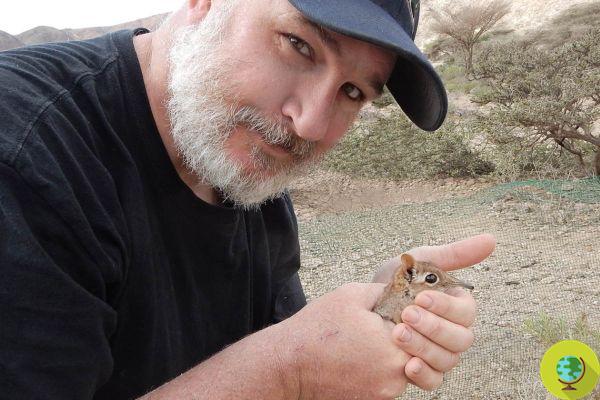Its existence had long been in doubt. The Somali elephant shrew was believed to be extinct but is still present in Djibouti
He is about to end up run over, his mother saves himA small creature, whose existence had long been in doubt. The Somali elephant shrew was believed to be extinct for over 50 years but a new study conducted by researchers at Duke University has confirmed its presence in Djibouti, Africa.
Also known as the Somali Sengi (Elephantulus revoilii), this shrew is a mouse-sized African mammal with a long, flexible nose that swings back and forth. Since the 70s, no scientist had seen this particular species typical of the Horn of Africa. There were only three dozen historical specimens in the museums.
Sengis are also known as elephant shrews, although they are neither elephants nor shrews. The Somali sengi, lost to science since 1968, is one of the 25 most sought after lost species by the Global Wildlife Conservation and has been among the least known of the 20 sengis species in the world, becoming one of the last great mysteries of African mammals. It is known to science only through 39 individuals collected up to hundreds of years ago and kept in museums today.
Earlier last year, Duke Lemur Center researcher Steven Heritage, along with a small team of other zoologists including Galen Rathbun of the California Academy of Sciences and Houssein Rayaleh of the Djibouti Nature Association, decided to see if the Somali Sengi were still in circulation, perhaps in other parts of East Africa, outside Somalia.
Although the species was previously only known in Somalia, Rathbun and Heritage had received suggestions that it might be in Djibouti. Rayaleh, a research ecologist and conservationist was certain he had seen the animal before, and the local population of Djibouti was able to confirm this through a series of photographs.
So it was. They managed to trace the traces left by 8 Somali sengi. Using some models of the distribution and potential habitats, they also concluded that the Somali Sengi is much more common than previously thought, spread across a much wider range of areas including hot, dry and rocky areas of Somalia, Djibouti and possibly even of neighboring Ethiopia.
"We who live in Djibouti, and by extension the Horn of Africa, have never considered the Sengi 'lost', but this new research brings the Somali Sengi back into the scientific community, which we appreciate," Rayaleh said. "For Djibouti this is an important story that highlights the great biodiversity of the country and the region and shows that there are opportunities for science and research here."
After some careful DNA and anatomical analyzes of the animals, the scientists not only confirmed that the small mammal was alive and well, but also found that it had been misclassified by scientists, possibly due to poor data.

©Steven Heritage, Duke University Lemur Center
Consequently, the discovery should allow this species to be classified from the category “lacking data” to “least concern” in the IUCN Red List.
“Usually when we rediscover lost species, we only find one or two individuals and we need to act quickly to try and prevent their imminent extinction,” said Robin Moore, one of the leaders of GWC's Search for Lost Species program. "This is a welcome and wonderful rediscovery during a time of turmoil for our planet, and one that fills us with renewed hope for the remaining small mammal species on our most wanted list."
DNA analysis shows that the Somali sengi is more closely related to other species from distant Morocco and South Africa, placing it in a new genus. The mammal has somehow dispersed over time over great distances, leaving biologists with a new puzzle to solve.
A species considered lost forever but fortunately still present on Earth.
Sources of reference: Global Wildlife Conservation, Iucn Red List, Duke University, Peer J
READ also:
Plants are dying out faster than animals
At risk of extinction as many as 600 species of animals more than expected. I study
The 10 smallest mammals in the world (PHOTO)


























